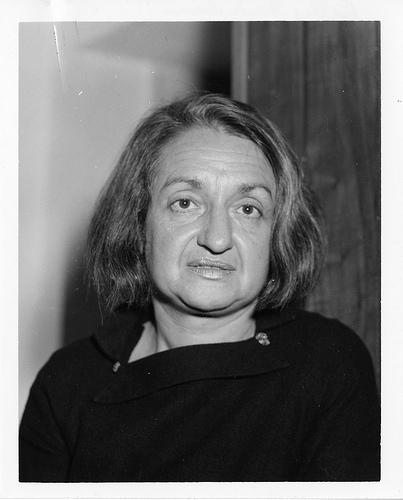Sam Vimes
(You can read part 1 of this series here, part 2 here and part 3 here.)
This is when I get serious. Feminism is perhaps the least funny topic since the Bubonic Plague, and one that is quite difficult to mock. After all, Medusa Magazine, a joke website, shut its doors late-2017, with the founder citing reasons that “it is no longer possible to satirise the Feminist left” such is feminism’s ability to be utterly ridiculous. What follows therefore is my attempt to summarise just how the hell we’ve arrived at feminism in 2018, condensing seventy years of mainly anti-patriarchal resentment into less than a thousand words.
Quick aside before I start – I appreciate the real struggles women as a gender have faced over time, the “second-class-citizen-wife-stays-at-home-unless-accompanied-by-male-relative” sort of misogyny so common in modern day Saudi Arabia for example. But in our liberal democracies, the rabidly insane, pussy-hat-wearing feminism that graces us in 2018 (that I described in part 3) is a disgraceful inanity that blights and makes a mockery of everything that real feminists actually fought for. I’m going to necessarily skip over the earnest feminist movements of the early twentieth century – the suffragettes, women’s suffrage, that sort of thing – and begin this brief history where things in my opinion started to go solidly off the rails.


Second Wave Feminism began when Simone de Beauvoir, a French existentialist, activist philosopher, published her book, The Second Sex, in 1949. The book was wildly popular in her native France, selling 20,000 copies in the first week after publication. For the first time a distinction was drawn between gender (society’s prevailing opinions about what man and woman should be) and sex or biology.
The book achieved popularity in the US, where the cause celebre was all about the freedom of a woman to no longer be destined to a subordinate role because of her sex. Feminists at the time were striving to “free” women from a patriarchal culture in which, despite decades of struggle, many women still prioritised motherhood over working [shock horror], and those that were in the workforce gravitated towards jobs as nurses, teachers, or secretaries [even more shock horror]. According to de Beauvoir, men and women were still constrained by their beliefs in biological essentialism – their traditional gender roles. Her quote “One is not born, but rather becomes, a woman. No biological, psychological, or economic fate determines the figure that the human female presents in society; it is civilization as a whole that produces this creature” epitomises this understanding.
She wrote passionately about the need for women to be less passive, that society trained young girls to be submissive, and young boys to be dominant, that men generally were transcendent and women relegated to what she called immanence, her word for stagnation in terms of sexual and domestic servitude.
Her militancy extended to her loathing of motherhood. She wrote, “By limiting women to performing …’tiresome, empty, monotonous’ household tasks, marriage ‘mutilates’ and ‘annihilates’ the wife. In marriage, ‘her life is virtually finished forever.”
She was further a staunch advocate of women owning their sexual liberation as a means to becoming independent of motherhood, encouraging the use of birth control not only as an honourable necessity, but as a means of liberating women from marriage. As she stated “I think that the family must be abolished.”

But it was really de Beauvoir’s notion that sex was separate from gender that set us on the path that we’re on now. Thanks, Simone. De Beauvoir’s first notable disciple in the US was a writer and activist named Betty Friedan. Most famous for producing the seminal book, The Feminine Mystique, in 1963, she started out as a housewife and mother of three, before discovering The Second Sex and identifying strongly with the notion of “patriarchal” science determining a woman’s role in society. What Friedan did very successfully, was tap in to the discontent of married women in the 1950’s and 1960’s who were yearning to escape the ‘feminine mystique’ – a term Friedan coined for society’s passive subjection of women into bored and sexually passive housewives. [Note – I am not advocating in any way FOR sexually passive housewives.]
Friedan’s core mission was to enable women to become “self-actualised’, giving up simpler, less-fulfilling roles such as wife and mother, in exchange for a more demanding, more difficult life of personal fulfilment. Borrowing from the writings of Abraham Maslow, of ‘Maslow’s Hierarchy of Needs’ fame, Friedan concluded that traditional gender roles make women miserable, and only self-actualised women can be happy. Thanks, Betty!

The third and perhaps most disagreeable feminist of the second wave is Kate Millett, author of Sexual Politics (1970), who some would say is the culmination of Second Wave Feminist thinking. As a rather radical Marxist, Millett’s primary argument was that the relationship between the sexes was nothing more than a power struggle, fostered by the patriarchy [that mystical word AGAIN] represented by the State, society and most especially ‘the family’. She broke the power relationship down into a series of ideological, biological, sociological and class theories which I can best summarise as follows:
• Gender is psychological or cultural rather than biological.
• The chief conspirator of the patriarchy is the family.
A secondary consequence was the impact that Millett’s work had on the entire structure of academia, with various disciplines – the humanities and social sciences in particular – quick to realise that university courses needed to be dismantled and reconstructed to focus on gender oppression; indeed, Millett’s theories were written as a guide to a fully-fledged Sexual Revolution, abolishing “male supremacy” for good.
All nice quasi-revolutionary stuff so far, but this is where the story gets a little weird. I’m sure all of us have read the comics and watched the sit-coms, and chuckled along at the women’s lib, burn-the-bra, Woodstock-type sexual revolution that’s part of pop culture, but there’s a real dark side to all of this too.
The first goal of the Sexual Revolution was to see roles in child-rearing fade and eventually disappear as parental roles became less gender-defined and more androgynous. Secondly, in order to remove the patriarchal family model, women needed to become economically independent. This could be achieved by a new charter of rights for minors that would foster their independence from the family, thus freeing mothers from the desire to raise their children. Yes, the dependence of children on their mothers is a patriarchal invention! Worse still, as children would be liberated to raise themselves, feminists envisioned these newly-liberated children freely experimenting sexually, entering the workplace and becoming more useful members of society.
The third and final goal of the sexual revolution was to promote any and all sexual inhibitions and taboos, particularly those that would threaten the traditional family and the patriarchy – namely homosexuality, ‘illegitimacy,’ adolescent sex, infidelity and promiscuity. The traditional model needed to be torn down to facilitate the indolent largesse of a bunch of batshit crazy misandrists who couldn’t nurture kids and wanted casual sex! Consequently, Millett’s sexual revolution opened the door for the gender identity spectrum and initiated the deconstruction of the traditional family, children, and motherhood.
More to come on this in Part 5. Thanks, Kate!









